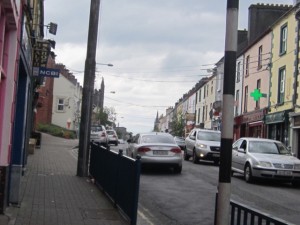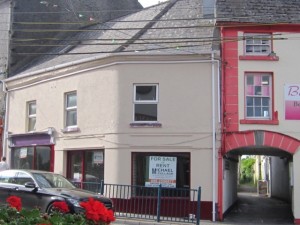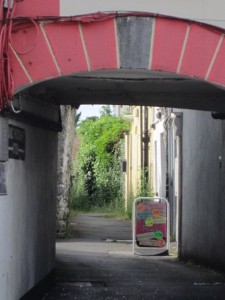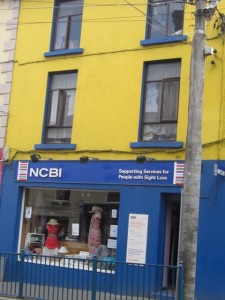O’Connor Power was in Mobile, Alabama, January 7th, 1876. He was on an extended tour of North America, September 1875 – March 1876. 1876 was the Centennial of American Independence and he visited Irish strongholds, promoting Home Rule and reinforcing the Fenian network.
Category: Uncategorized
IS IT ANOTHER BROKEN TREATY?
O’Connor Power’s letter, ‘Is it another broken treaty?’ appeared first in the Irish Independent 19 June 1916. The next day it was published by the Cork Examiner, issue 19,695. See ‘175 years of letters’ in the Irish Examiner August 30, 2016.
For the full text see That Irishman, pp. 221-222.
Selected Writings of O’Connor Power
That Irishman Book Launch May 2011
The John O’Connor Power Debating Competition
Proclamation Day at St Jarlath’s College, Tuam: congratulations to the winners of the John O’Connor Power Debating Competition.
That Irishman was a mature student at St Jarlath’s 1871-1874. In his last year he lectured in Irish history. He was ranked as one of the greatest orators of the late nineteenth century. In 1906, at the age of sixty, he published The Making of an Orator.
Jedi lightsabers
[That Irishman] and his associates were driven by a desire to make the world a better place; they spoke and wrote robustly of moral conviction, moral energy, the moral force of right. ‘Vigorous’ and ‘energetic’ were adjectives they favoured. In recent times there has been a degradation of liberal vocabulary. Morality was not a ‘Thou shalt not’ but a compelling command for good works. Words, actions, were Jedi lightsabers cutting swathes through an unjust world.
That Irishman, Afterword, p.233.
January 1868
In the autumn of 1867, O’Connor Power travelled to North America to discuss reorganisation with the American Brotherhood. When he returned to Ireland, he moved, in early January 1868, as the Supreme Council’s representative for Connacht, to County Mayo to set up Fenian units.*
On 13 February, his twenty-second birthday, O’Connor Power was in Dublin to meet with the Supreme Council, the governing body of the Irish Republican Brotherhood. A few days later, he was arrested on suspicion and held under the Habeas Corpus Suspension Act, a law which allowed detention without trial or evidence. He spent five and a half months in Kilmainham jail.
*SPO Fenian Files, 4 January 1868, MS 242R.
Confusion Fusion
John O’Connor Power and John O’Connor, Fenian leaders and prominent members of the Supreme Council of the Irish Republican Brotherhood, were also members of Parliament and Priors of the Johnson Club. The two patriots, conveniently diminished in historical narratives, were frequently fused in accounts and in accompanying indexes. There is a dismaying confusion with Tay Pay, T P O’Connor, a contemporary. Tay Pay was a member of the Irish Parliamentary Party, a popular journalist and author. Through sheer longevity, he became the longest serving member of the House of Commons.
That Irishman and the Quakers
On a visit to the Quaker burial ground in Temple Hill, Blackrock, I paid my respects to the resting place of Theodore Moody (1907-1984), Professor of History at Trinity College, Dublin. Moody, who reorganised the Quakers in Ireland records, also did a great deal to encourage research into the life of John O’Connor Power.
O’Connor Power moved to Rochdale, Lancashire in 1861. He formed a connection with the Chartist, John Bright, an English Quaker and a tireless champion of Irish causes. Bright, a Radical Liberal, was one of the first Quakers to sit in the House of Commons. He was Prime Minister Gladstone’s adviser on the Irish Question and provided a safe house for the Fenians to air their grievances and plan a future. In his diaries, Bright mentions that O’Connor Power ‘lived in Rochdale at one time’.
Alfred Webb, a Quaker Nationalist, also has a place in the Temple Hill burial ground. He resigned from his position as Land League treasurer, complaining of Parnell’s ‘autocratic management of funds’.
The Childhood Years
I received a facebook message from Paula Lynch Keogh, an Irish American. She has the Vanity Fair Spy print of O’Connor Power on her sitting room wall – and a family connection.
Paula’s father, Joseph Lynch, shared a story with his children. Her great- great- grandmother, Catherine O’Connor (1822-1866), married Ayre Duffield in Ballinasloe 11 January 1849. They lived in 60 Society Street, with an office and yard in Bolgers Lane.* Their daughter, Jane Duffield Lynch (1852-1915) was Paula’s great-grandmother. Jane talked of her ‘half-brother’, John O’Connor Power, who lived with her family when she was a child. They stayed in touch and, on his visits to the United States, O’Connor Power visited her in Andover, Massachusetts.
Ayre Duffield (born in England) was a 31 year old baker from Banagher when he married Catherine Carthy in Ballinasloe Registrar’s Office. His father, William Duffield, was also a baker.** Catherine Carthy, formerly O’Connor, a shopkeeper, was a twenty-eight year old widow. Her father, Pat O’Connor, was a farmer. The witnesses were Peter Dunne and Michael Cogan.
The Valuation Office holds records of Society Street. In 1860, Catherine Duffield was living at 60 Society Street. In 1861, the Valuation Book, ‘revised April 1861’, has the name Catherine Duffield crossed out and replaced by a Charles Nangle. Catherine’s death certificate is dated 17 January 1866. She was forty-four years of age and a widow. She was still living in Society Street and her daughter, Jane Duffield, was present at her death.
There was an economic depression in Ireland in the early sixties and many emigrated to find a new life. O’Connor Power went to Lancashire and took up a trade in house painting, while recruiting for the Irish Republican Brotherhood. His brother, Thomas, three years older, joined the British army. Catherine Duffield’s daughter, Jane, moved to the United States and is listed in the 1870 census as a lodger in the home of Robert Power, a 28 year old painter. She is working in a local textile mill in Chelmsford, Lowell, Massachusetts. She was later married locally by a Justice of the Peace.
In his biography of Father Patrick Lavelle, Mayo historian Gerard Moran describes O’Connor Power as ‘middle class’.
*Griffith’s Valuation. The house was valued at £13, the office and yard at 5 shillings. Andrew Banfield, an attorney, was the landlord. In the 1901 census, John Nangle, baker, is living in 30.1 Society Street. He has a sixteen year old son, Charley.
** William Duffield, Baker, Main Street, Banagher, is listed in the 1823 Commercial Directory and the 1846 Slater’s Directory. Banagher was a thriving market town, twenty miles from Ballinasloe. It was on the mail car route and on the Grand Canal line to Dublin.
Paula visited Ballinasloe with her husband last year. She has sent me some photographs of Society Street and Bolgars Lane.
Society Street, June 2015.
Bolgers Lane. Site of Duffield bakery on the right.
Site of Mary O’Connor Duffield’s shop and home to That Irishman in the 1850s.



